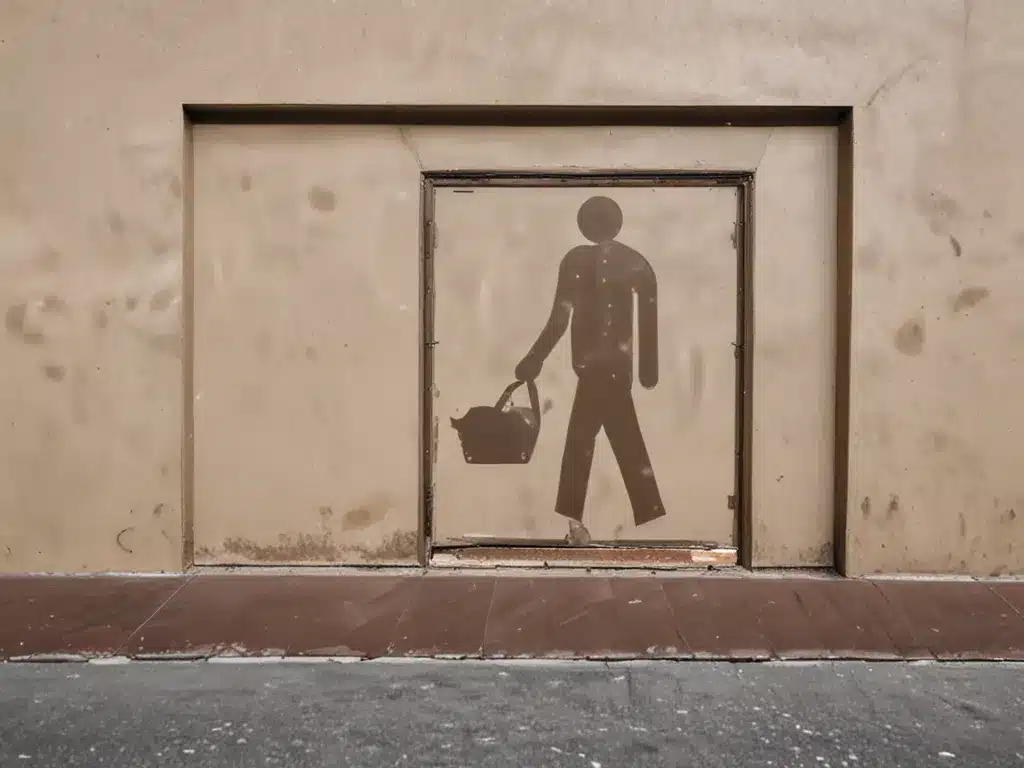Introduction
As the sole proprietor of a small cleaning business, I often get calls to deal with human waste left in public places or businesses. While unpleasant, dealing with these types of biohazards is part of my job. In this article, I’ll share my experiences and tips for properly handling human waste.
Locating and Assessing the Waste
The first step is finding where the waste has been deposited. I look carefully around the area for any visible feces, urine, blood, or other bodily fluids. If it’s a large area, I grid it out and do a thorough search. Once located, I assess factors like:
- Volume – Is it a small stain or puddle, or a large pile? More waste requires more cleanup time and supplies.
- Consistency – Is it solid, loose, or liquid? The consistency impacts the cleanup method.
- Smell – A strong odor suggests it’s fresh and likely contains microorganisms.
- Color – Bright or dark colors often indicate illness in the defecator.
- Surfaces – Floors, walls, fabrics, etc. Each surface needs a specific approach.
Safety Precautions
Dealing with human waste poses health risks so I wear personal protective equipment (PPE):
- Gloves – Latex, rubber, or nitrile gloves prevent contact with waste.
- Eye protection – Goggles keep bodily fluids from splashing into my eyes.
- Mask – A mask or respirator prevents inhaling droplets that may carry disease.
- Coveralls – disposable coveralls keep my clothing protected.
I also put out signs to alert people the area is closed for cleaning biohazards.
Cleaning Solid Waste
For solid feces I follow these steps:
- Wear proper PPE.
- Cordon off the area.
- Remove any large debris with disposable scoops or cardboard.
- Apply an enzyme cleaner to break down waste and odor. Let sit 10 minutes.
- Use paper towels to wipe up remaining mess and dispose of properly.
- Mop or wipe down the area with disinfectant cleaner.
- Rinse thoroughly and allow to dry before reopening area.
- Remove PPE carefully to avoid contamination and dispose of properly.
- Wash hands thoroughly with antibacterial soap.
Cleaning Liquid Waste
For urine, vomit, or blood I use this process:
- Wear proper PPE.
- Blot up excess liquid with paper towels, rags, or absorbent material. Dispose properly.
- Apply an enzyme cleaner and let sit 5 minutes.
- Scrub area with a stiff brush and rinse thoroughly.
- Use disinfectant cleaner over the entire area.
- Rinse and dry before reopening the space.
- Remove and dispose of PPE carefully.
- Wash hands thoroughly.
For large volumes of liquid waste, I may use an industrial wet vac to suck it up before scrubbing and disinfecting.
Cleaning Porous Surfaces
Special steps must be taken when waste soaks into soft surfaces:
- Carpeting – Blot up excess, clean with enzyme cleaner, disinfect, and consider removing carpet and underpadding.
- Mattresses – Clean surface, use enzyme cleaner, disinfect, allow to dry, then steam clean. May need to be discarded.
- Fabrics – Follow mattress steps. Heavily soiled fabrics may need disposal.
Waste can seep deep into porous surfaces making complete removal difficult. Notifying a restoration company is recommended in severe cases.
Safe Waste Disposal
I dispose of all waste and cleanup materials in sealed, double-bagged plastic bags marked with biohazard labels. Bags go directly into a hazmat bin for proper disposal by a waste management company. Any cleaning tools also get disinfected or disposed of after the job.
When to Call a Professional
While I can handle small waste cleanups, I call in hazmat removal professionals for:
- Large volumes of waste
- Heavily soiled porous surfaces
- Exposure over a wide area
- Known biohazards like apartments of hoarders
- Access problems like high ceilings or cramped spaces
Though unpleasant, cleaning human waste is part of my job. By following proper procedures I can handle these biohazards safely. Let me know if you ever need my gross cleanup services!







